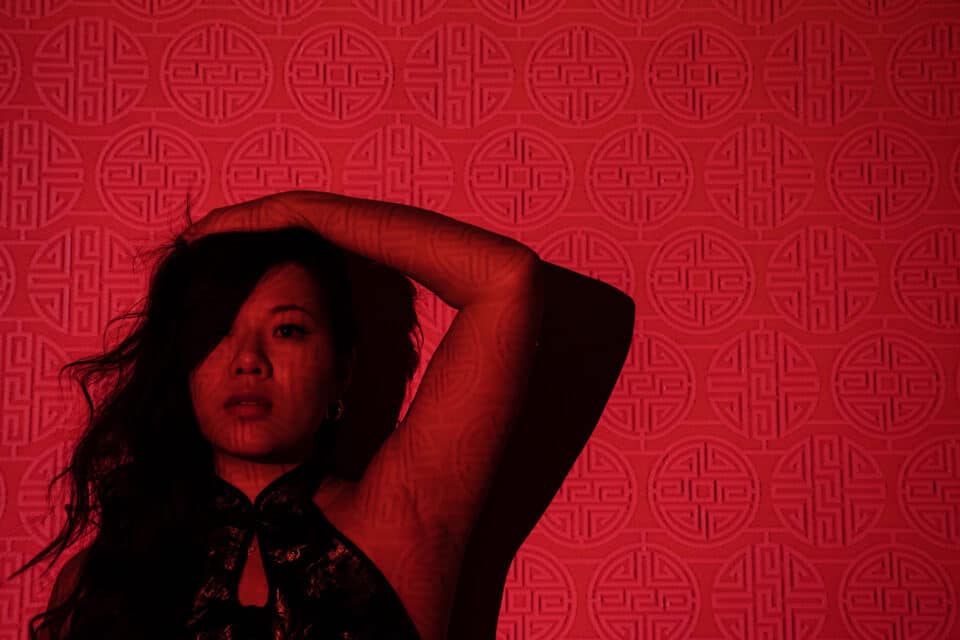Brands need to tell the right stories to the right audiences. Like Western festive marketing, narrative is the most effective way to stand out during the busy New Year season. This requires marketing teams to take a ‘big picture’ view by keeping up to date with Chinese culture, spirit, national sentiment and even national policies, understanding what’s important to their target market to foster an emotional link with the brand.
Share of voice for Gucci has sky-rocketed on Chinese social media in the last few days. Their 2022 Year of the Tiger campaign (including real tigers cleverly photoshopped next to models) has gained them overwhelmingly positive feedback! Chinese New Year is the most important festival of the year for your China marketing – getting your narrative spot on and maximising the return on your budget are key to success at this ultra-competitive time of year. Many brands are starting their marketing earlier and earlier, sometimes months before Spring festival and budgets can stretch into the millions of pounds for just the Lunar New Year festival. So how can you authentically market your brand during this crucial time of year and capitalise on this great opportunity for your brand?
China’s Generation Z are changing the face of Lunar New Year marketing.
Ensuring branding resonates with Gen Z has become essential for success in contemporary China, due to their high purchasing power and the influence of their tastes on other generations. Each new generation develops their own way of communication with new cultural symbols and a unique social language – understanding this change will allow you to narrow the gap between China’s youth and your brand. Engaging GenZ by speaking to their core values is key to resonating with wider Chinese society.

Finding unique angles to authentically integrate Chinese culture into branding.
China moves fast and with trends reshaping society at speed. With such rapid changes, how can brands stand out from competitors? China’s GenZ are losing interest in overused Spring Festival marketing tactics such as heart-warming ads playing on emotions and themed around ‘reunion’, ‘going home’ and traditional cultural symbols. Instead, China’s youth are rewarding brands that can cause spark discussion and encourage discussion or interaction with their Lunar New Year campaigns. Interesting, innovative or even downright strange campaigns have resonated more strongly in recent years than emotional or traditional culture focused marketing.
Brands need to tell the right stories to the right audiences. Like Western festive marketing, narrative is the most effective way to stand out during the busy New Year season. This requires marketing teams to take a ‘big picture’ view by keeping up to date with Chinese culture, spirit, national sentiment and even national policies, understanding what’s important to their target market to foster an emotional link with the brand.
Starting with a local perspective and avoiding stereotypes.
The best global marketing campaigns start with a local perspective. In the past, brands limited themselves by only incorporating the most traditional symbols of Chinese culture and verging on cultural appropriation – think branding in red and gold, paper lanterns and exaggerated emotional plays.
Prada’s 2019 CNY campaign was poorly received on Chinese social media, accused of stereotyping by bombarding the viewer with too many traditional symbols and merely including them for the sake of it – too surface level to be meaningful to Chinese viewers.On the other hand, using narrative and creativity will make your brand stand out – a tactic successfully deployed by Nike in their 2020 CNY campaign. Nike choose one symbols of Chinese New Year: the Red Packet. But the narrative focused on the exchange between a young girl and her elder ‘auntie’ as she grows and annually tried to refuse to accept the gift, aided of course by her Nike shoes! This storyline is extremely relatable to Chinese of all ages, as it is polite to resist the generosity of relatives and the humour is sure to have resonated with China’s GenZ!
Western brands are refreshing their strategy – bringing new perspectives on Chinese New Year to showcase the uniqueness of their brands through innovative and exciting narrative, being respectful of Chinese culture without going overboard and authentically connecting with their audiences.

Start early! CNY Campaigns should be carefully planned.
Chinese New Year campaigns should be part of your long-term strategy – remember that the Lunar New Year festival is not just two days! Just like Western key dates, it’s vital to start marketing activities early in the lead up to Chinese New Year. Only executing marketing activities during the festival is too late as the digital space will be flooded and people will be occupied with their travel plans, family activities and the festivities.

In sum, marketing for Lunar New year 2022 has the same underlying logic as any marketing in China – to become the first choice, you must have deep insights into your audience’s behaviors and interests, be willing to innovate, focus on great content narrative and authentically incorporate aspects of Chinese culture.
For deeper insights into the most important generation affecting contemporary China’s consumption patterns – download the Chinese GenZ Guide.
